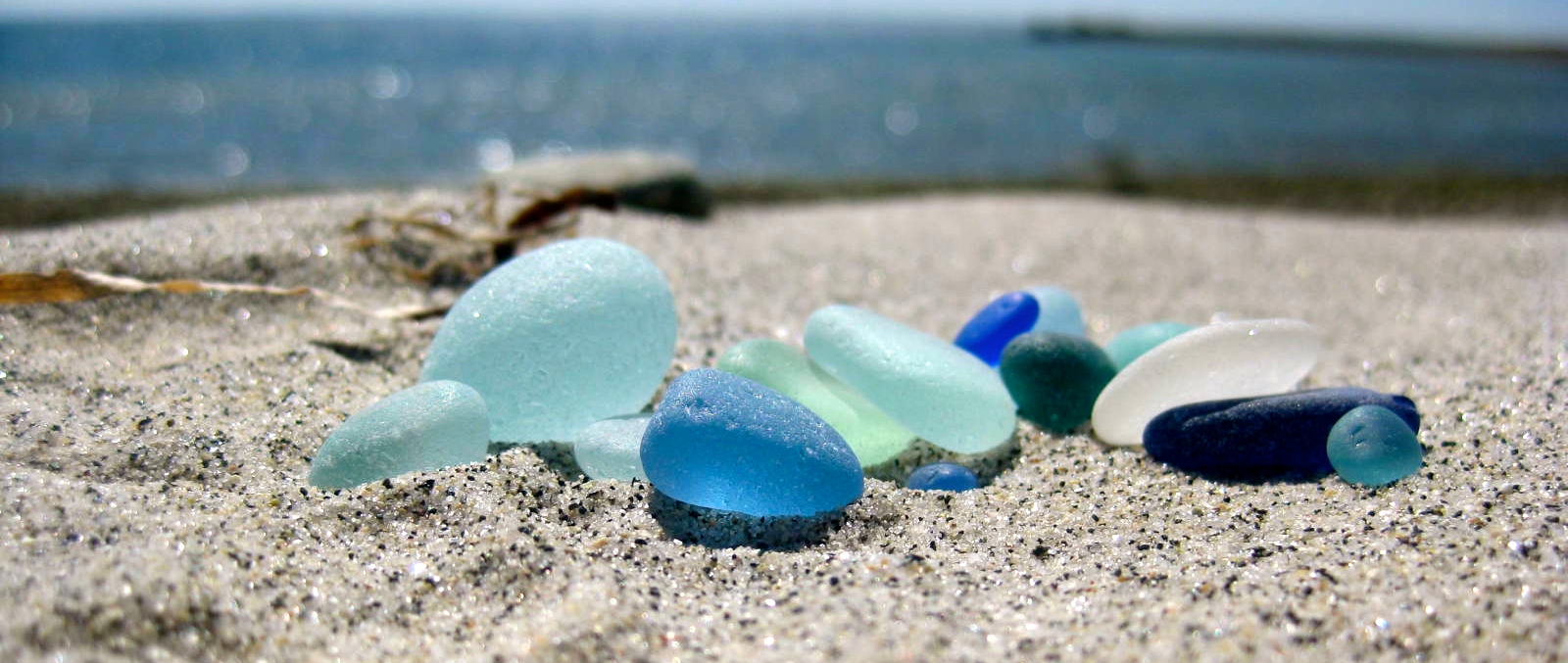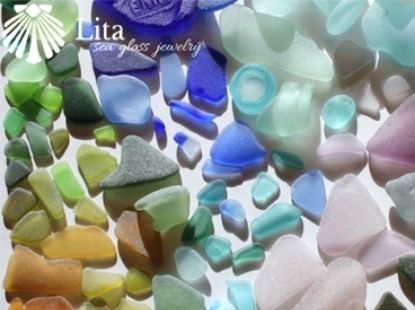

WHAT IS SEA GLASS AND WHERE DOES IT COME FROM?
Sea glass (also called seaglass, beach glass, or mermaid's tears) starts out its long journey as bottles and glass that get thrown into the ocean, broken, and then tumbled smooth by the waves, sand, and time. It's Mother Nature's way of making something beautiful out of our disposables! Products today are made and disposed of very differently than they were in the past. Years ago, almost everything we purchased came in glass bottles or jars. These same products today are being packaged in plastic bottles and containers. Trash disposal was something that little thought went into, and the environmental issues that we face today were not a factor. Residents would dispose of their trash by tossing it into the ocean or burying it into the sand. Over the years we have come to understand the dangers of pollution, and have put systems into place such as recycling to address these issues. We have evolved our products to be eco-friendly as the world goes “green”. As with any evolution, we gain some things and lose others. In the manufacturing shift from glass to plastic, beautiful sea glass is something that we are losing. As time goes on, sea glass is becoming increasing harder to find and it is only a matter of time before these beautiful gems will simply be a thing of the past.

HOW CAN I TELL IF THE SEA GLASS IS REAL?
When glass is exposed to the elements for a prolonged period of time, its surface becomes hydrated. Small "C" shaped patterns form on the hydrated surface by being worn down from the grinding of the sand and rocks. This "pitting" gives sea glass it's frosted look and is a process made only by nature that cannot be duplicated by any machine. There are, of course, different levels of pitting due to the conditions of the area where the glass is being tumbled and the PH levels of the water. The PH level in the ocean fluctuates due to the amount of pollution in that area. However, in places like large lakes where sea glass is also found, the PH levels are much lower due the lack of salt and other chemicals found in the ocean. With the lower levels, the glass will be smoother because it cannot hydrate as well. In turn, the surface will not be able to break down as easily. In areas where there are less rocks and shells and finer sand, the sea glass will have a softer and smoother look. If the area is rockier with coarser sand, the glass will more have more pitting and frosting.

WHAT GIVES SEA GLASS IT'S VALUE?
What makes one piece of sea glass more valuable than another? Well, there are several factors that affect the value of Natural Sea Glass. Sea glass is just glass, like other gemstones are just rocks! The true value of any "gem" is not only its beauty, but the rareness and unique quality each piece holds. The shape of the sea glass plays an important role in determining the value. Triangular is the most common shape for sea glass. As time goes by and the edges of the triangle smooth, it molds into a softer, more oval or “egg” shape. To get a piece of sea glass to this stage (especially with no chips or flaws) is a long process and special occurrence. Larger pieces of glass are also harder to find in a nice smooth condition because they are more likely to hit a rock and break into smaller pieces. One piece of sea glass can easily be in the ocean for 50-100 years before it is perfectly smooth and frosted to the point of being "jewelry quality". Color is also an important factor in determining the value of sea glass. It can also help date a piece of sea glass and give us an idea of what kind of bottle or tableware it came from.

COLOR RARITY CHART
The commonly found colors of sea glass such as green, brown and white are labeled as such because these colors still have a source of new glass production. Over time, these colors will become harder to find due to the shift from glass to plastic, and the recycling programs of modern day. Colors that are labeled “rare” fall under this category because there are not many (or any) glass products being made in this color source. In most cases, the “rare” and “extremely rare” colors are shades not often used, even when glass production was at its peak. Historically, colors were expensive to make. Red, for example, required actual gold to achieve the rich cherry color.
- 1) Common Colors: Kelly Green, White, Brown
- 2) Uncommon Colors: Soft green (Seafoam), Soft blue, Olive green, Lime green, Golden amber, Amber
- 3) Rare Colors: Pink, Citron, Deep Seafoam, Teal Green, Aqua, Cobalt blue, Cornflower blue, Purple (lavender)
- 4) Extremely Rare: Orange, Red, Yellow, Turquoise, Teal blue, Gray

ULTRA RARE SEA GLASS
"Ultra-Rare" sea glass is a term that we coined to define the multi-layered, colorful pieces of unique glass from England. The term "Ultra Rare" is now widely used in the sea glass community and is also referred to as "End of Day" sea glass or "Flash Glass".
This glass was once made for decorative uses such as tableware and Victorian art glass. The color was added in layers. The bottom layer was almost always white or clear and different colors were added to the top. The glass was made this way mostly because it was more cost efficient; it was less expensive to add colors on top of white glass then it was to make the whole design one solid color. These patterned pieces of sea glass are the result of this process. This glass was manufactured next to the ocean near a cliff. At the end of the day, the glass scraps would be tossed into the ocean and, in time, these beautiful pieces would form. These pieces of genuine English sea glass are some of the most unique and quality pieces of sea glass offered. Most of them date back to the early 1900's.

WHERE CAN SEA GLASS BE FOUND?
Sea glass is not as plentiful and easy to find as it once was. Most people say they search and search but find only a few pieces of sea glass, usually in the most common colors. As stated above (in the "what is sea glass and where does it come from" section), sea glass is slowly diminishing. It is also very rare to find sea glass on heavily populated beaches. One of the reasons for this is because town beaches or popular beaches are often very sandy and smooth. This is not the ideal sea glass environment. Remote rocky beaches are a great place to look. During a storm, it is these rocky areas that glass bottles can break against which, over time, forms sea glass. It is also easier for pieces of sea glass to get suck on these beaches because there are more rocks for them to get wedged in between. Like everything else there are good days and bad ones, but you never know what the tide will bring in!
